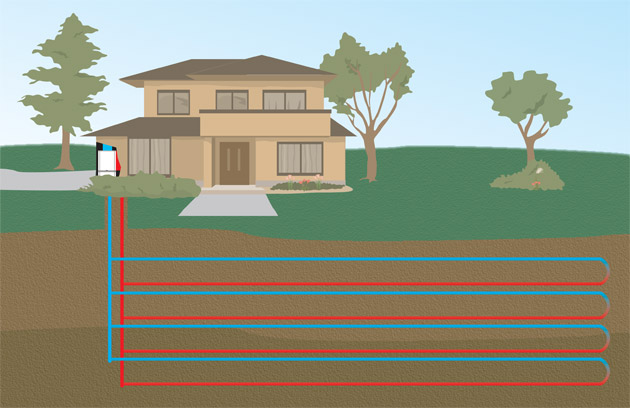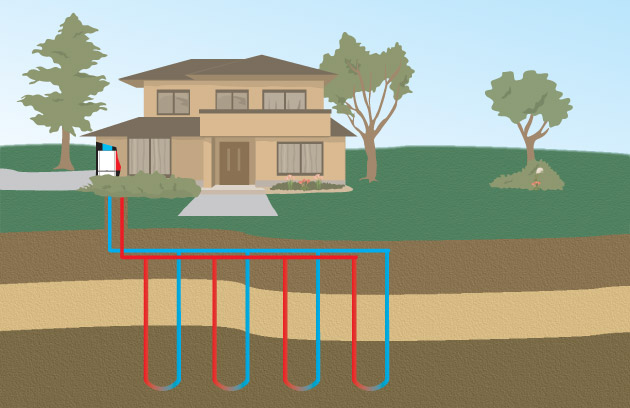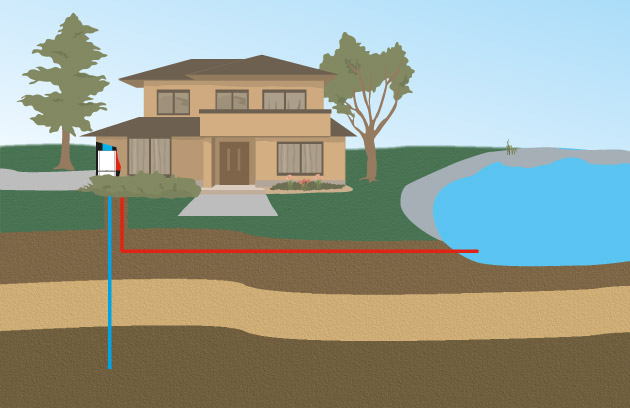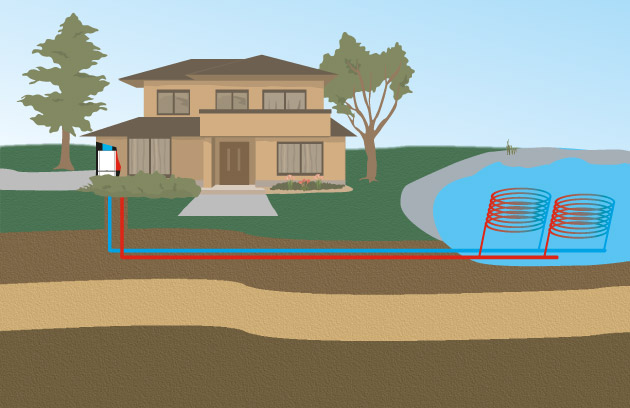"OUTSTANDING HOME COMFORT THROUGH ADVANCED TECHNOLOGY" How would you like to have a heating and air conditioning system in your home that can:• Save energy and slash electric bills, • Cut greenhouse gas emissions, • Rid your yard of unsightly outdoor equipment, • Drastically reduce the cost of your hot water, and • Reduce maintenance costs— even as it improves the year-round comfort of your home? Sound too good to be true? In fact, such units, called geoexchange systems, offer such a lengthy list of benefits that at first glance they do seem too good to be true. Their benefits, though, flow directly from the clever application of sound technology—what you can think of as good science. Once you understand how geoexchange systems work, you’ll understand how they can bring such an attractive list of benefits to your home. --- READ MORE |
||
 Horizontal Loop: This is the most common loop used
when adequate land area is available. Loop installers use excavation
equipment such as chain trenchers, backhoes and track hoes to dig
trenches approximately 4 to 8 feet deep. Depending on design, from 1 to 6 pipes are installed in each trench.Trench lengths range from 100 to 400 feet, depending on the loop design and application. Overall land area required ranges from 750 to 1500 sq. ft. per system ton.
 Vertical Loop: This loop is used mainly when land area
is limited and in retrofit applications of existing homes. A drilling
rig is used to bore holes at of depth of 100 to 300 feet. A U-shaped
coil of high density pipe is inserted into the bore hole. The holes are
then back filled with a sealing solution. Overall land area required ranges from 100 to 200 sq. ft. per system ton.
|
 Open Loop: This system can be installed if an abundant
supply of high quality well water is available. A typical home will
require 4 to 8 gallons of water per minute. A proper discharge area
such as a river, drainage ditch, field tile, stream, pond, or lake must
be present. Re-injection or semi-closed recirculation wells can also be utilized in our area. In ideal conditions, an OPEN LOOP application can be the most economical type of system to install.
 Pond Loop: A pond loop is an option if a large body of
water is available within approximately 200 feet of the home. A ½ acre,
8 to 10 foot deep body of water is usually adequate to support the
average home. The system uses coils of pipe typically 300 to 500 feet
in length. The coils are placed in and anchored at the bottom of the
body of water.
|
|